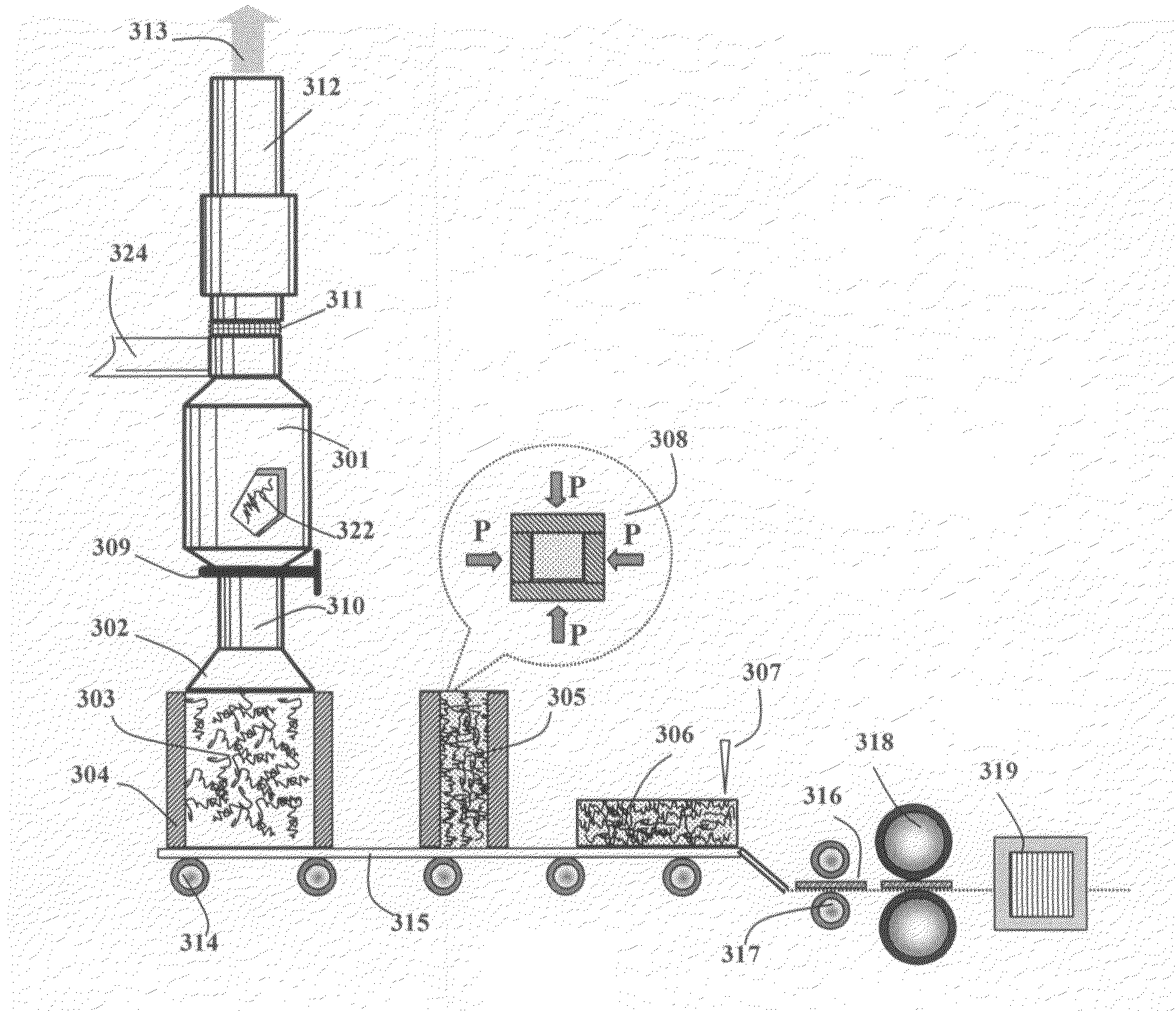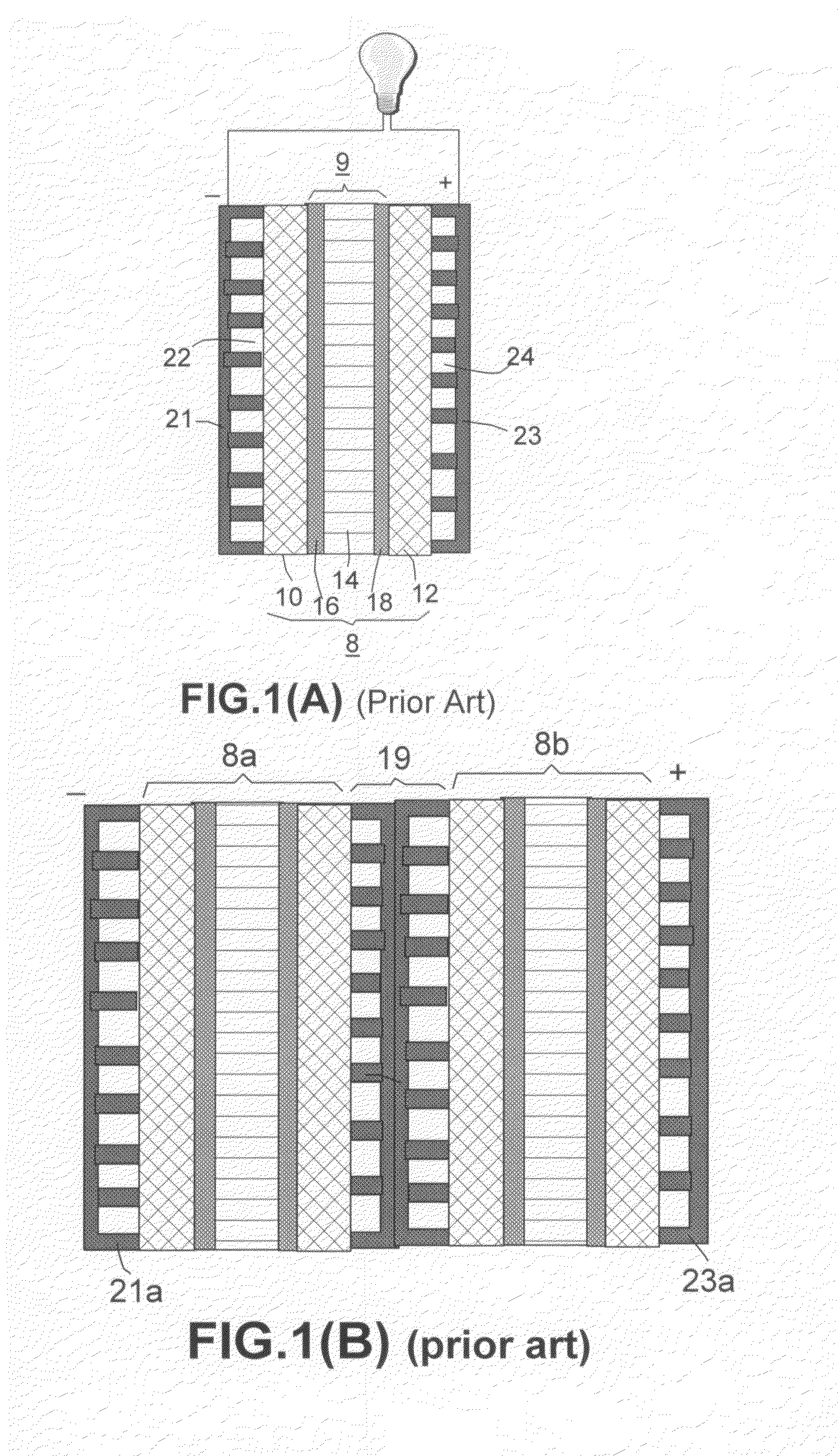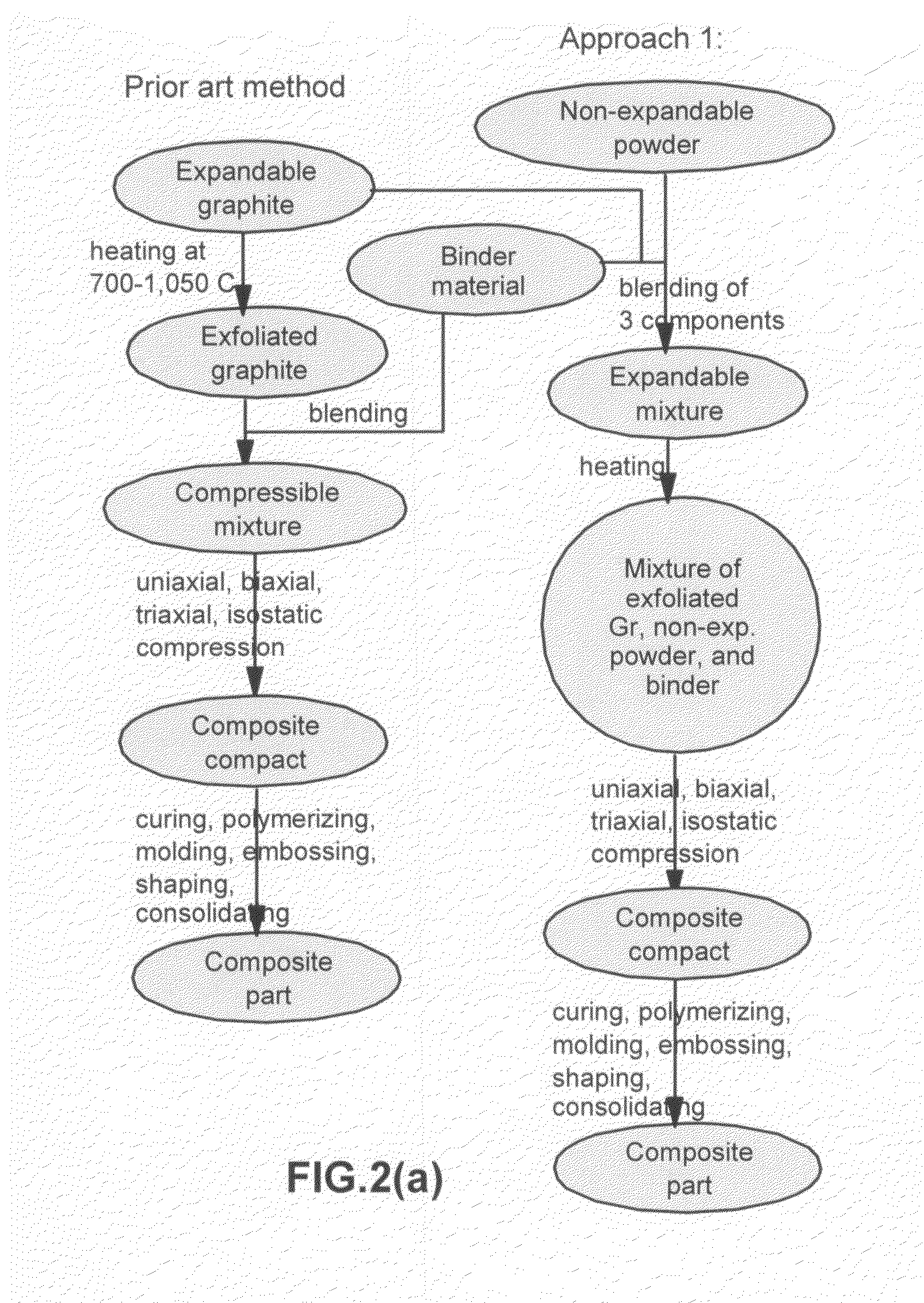Method of producing exfoliated graphite composite compositions for fuel cell flow field plates
a fuel cell and flow field technology, applied in the field of composite compositions, can solve the problems of significant impact on the performance, durability, cost, and cost of a fuel cell system, and achieve the effects of reducing surface tension and viscosity, promoting adhesion within the compact, and eliminating or reducing further anisotropy
- Summary
- Abstract
- Description
- Claims
- Application Information
AI Technical Summary
Benefits of technology
Problems solved by technology
Method used
Image
Examples
example 1
Polyethylene-Expanded Graphite Composites
[0062]A series of composite compacts were prepared as follows:
[0063]Sample 1-A: Ultrafine polyethylene (PE) powder, having an average particle size of about 10μm, was dry-blended with 30% by weight of non-expandable natural graphite particles and 70% by weight of acid-intercalated, expandable graphite (based on the total weight of expandable and non-expandable graphite). The PE amounts were 5, 15, 25, and 50% by weight based on the total weight of the resulting composite composition. The non-expandable graphite was intended as an isotropy-promoting agent. The three-component mixture was enclosed in a quartz tube, which was purged with nitrogen gas and then loosely sealed from both ends of the tube with ceramic cloth. The tube was rapidly transferred to the center of a tube furnace pre-heated to a temperature of 1,100° C. and maintained at that position for 20 seconds. Rapid expansion or exfoliation of the expandable graphite occurred and, sur...
example 2
Polyethylene-Expanded Graphite Composites (Bi-Axial and Triaxial Compression)
[0070]Sample 2-A is identical to sample 1-A (15% PE) and Sample 2-D is identical to sample 1-D. However, Samples 2-A and 2-D were subjected to bi-axial compression (the first compression vector is defined as the X-axis direction and the second compression vector is the Y-axis direction) at a final pressure of 500 psi and, separately, tri-axial compression (samples compressed in X- and Y-axis directions first, followed by a final Z-axis compression (12,500 psi) to form a thin plate). The samples were consolidated (heated to above 160° C.) and then cooled under a final pressure of 500 psi (sample of biaxial compressions only) and 12,500 psi (triaxial compression sample), respectively. The electrical conductivity values in the three directions of all samples are given in Table 2:
TABLE 2Electrical conductivity of biaxial and triaxial compression samples.Sam-CompressionX-axisY-axis conduc.,Z-axis conduc.,pledire...
example 4
Thermoset Resin-Expanded Graphite Composites
[0073]Sample 4-A: First, 30% by weight of non-expandable natural graphite particles and 70% by weight of bromine-intercalated, expandable graphite (based on the total weight of expandable and non-expandable graphite) were dried blended. The non-expandable graphite was intended as an isotropy-promoting agent. The mixture was enclosed in a quartz tube, which was purged with nitrogen gas and then sealed from both ends of the tube with ceramic cloth. The tube was rapidly transferred to the center of a tube furnace pre-heated to a temperature of 600° C. and maintained at that position for 30 seconds. Rapid expansion or exfoliation of the expandable graphite occurred. The resulting graphite worms were then mixed with 25% by weight of fine phenol-formaldehyde powder, based on the total weight of the resulting composite composition. The resulting mixture was charged into a mold, heated to 200° C., and uniaxially compressed to a pressure of 15,000 ...
PUM
| Property | Measurement | Unit |
|---|---|---|
| pressure | aaaaa | aaaaa |
| specific areal conductivity | aaaaa | aaaaa |
| thick | aaaaa | aaaaa |
Abstract
Description
Claims
Application Information
 Login to View More
Login to View More - R&D
- Intellectual Property
- Life Sciences
- Materials
- Tech Scout
- Unparalleled Data Quality
- Higher Quality Content
- 60% Fewer Hallucinations
Browse by: Latest US Patents, China's latest patents, Technical Efficacy Thesaurus, Application Domain, Technology Topic, Popular Technical Reports.
© 2025 PatSnap. All rights reserved.Legal|Privacy policy|Modern Slavery Act Transparency Statement|Sitemap|About US| Contact US: help@patsnap.com



